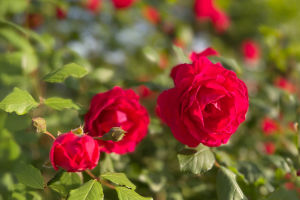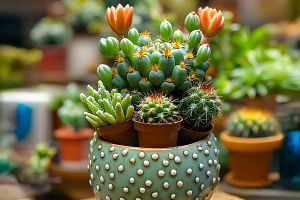Hello, garden enthusiasts! Have you ever wondered about a flower that only reveals its true beauty after the sun sets? The Cestrum nocturnum, is one of those fascinating plants.
While many flowers open up in the daylight, this one holds its secrets until the night, offering a captivating scent and ethereal presence.
Today, we're diving into the world of this intriguing flower and learning more about its enchanting nighttime display.
What is the Night-Blooming Jasmine?
The Cestrum nocturnum, or night-blooming jasmine, is a tropical shrub known for its intensely fragrant white or yellow flowers that bloom exclusively at night. Unlike other plants that unveil their beauty during the day, the night-blooming jasmine waits until dusk to release its scent, which is often described as sweet, rich, and exotic.
Native to the Caribbean and parts of Central America, it thrives in warm, tropical climates. Although it's a common sight in gardens throughout the tropics, it can also be grown in subtropical or temperate regions as an indoor plant or in greenhouses. The night-blooming jasmine typically reaches about 3 to 4 feet in height and spreads quite a bit, making it ideal for borders or as a stand-alone feature in the garden.
Why Does It Bloom at Night?
One of the most intriguing aspects of the Cestrum nocturnum is its nocturnal blooming habit. So why does this flower only bloom in the night? The answer lies in its pollination process. Unlike many flowers that rely on bees, butterflies, or birds to pollinate them, the night-blooming jasmine attracts moths, which are more active during the night.
By blooming at night, the flower maximizes its chances of being pollinated by these nocturnal creatures, which are drawn to its powerful scent. The fragrance, which can travel over long distances, is designed to ensure the plant's survival by attracting pollinators during the cooler hours of the evening. It's a perfect example of how plants have evolved to optimize their chances of reproduction!
The Aroma That Fills the Air
What truly sets the night-blooming jasmine apart from other flowers is its intoxicating fragrance. As the sun sets, the blossoms release a strong, sweet aroma that quickly fills the air, creating an atmosphere of tranquility and mystery. The scent is so potent that it can travel quite far, often attracting not just pollinators but people who live nearby.
This unique feature makes the Cestrum nocturnum a favorite among evening garden enthusiasts. Imagine stepping outside on a warm summer evening, and as dusk settles, the air around you becomes filled with the sweet, floral fragrance of night-blooming jasmine. It's almost as if the garden transforms into a peaceful sanctuary, with the air itself carrying the magic of the night.
How to Grow and Care for Night-Blooming Jasmine
If you're intrigued by the idea of growing this fragrant beauty, we've got some tips for you! While the Cestrum nocturnum is relatively easy to grow, it does have some specific care requirements to help it thrive.
1. Location: The night-blooming jasmine prefers a sunny location with well-drained soil. It loves warmth, so it's best suited for tropical and subtropical climates. If you live in a cooler area, consider growing it in a pot so that you can bring it indoors during the winter months.
2. Watering: This plant enjoys regular watering but doesn't like to sit in water. Make sure the soil is well-draining to prevent root rot. Water the plant when the top inch of the soil feels dry to the touch.
3. Pruning: Night-blooming jasmine can grow quite quickly, and regular pruning will help keep it in shape. Trim the plant after it finishes flowering to encourage new growth. Cutting back on old or leggy stems can also help improve air circulation and overall plant health.
4. Fertilization: A balanced, slow-release fertilizer can be applied once in the spring and again in the summer to help promote healthy growth and abundant blooms.
5. Temperature: This tropical beauty thrives in warm temperatures, typically between 60°F and 85°F (15°C to 29°C). Protect it from frost during the winter months, as cold weather can damage the plant.
The Night-Blooming Jasmine in Garden Design
The night-blooming jasmine is a wonderful addition to any garden, especially for those who enjoy spending time outdoors in the evening. Whether you're designing a peaceful backyard retreat or looking to add an extra touch of fragrance to your garden, this plant can be a perfect fit.
Its vibrant yellow or white flowers provide a striking contrast against darker foliage, making it an eye-catching feature during both day and night. During the day, the plant's lush green leaves offer a peaceful backdrop, but once the evening sets in, the real magic happens. The flowers' fragrance fills the air, creating an inviting and romantic ambiance in the garden.
This plant is especially effective in areas where you like to relax at night, such as near patios, benches, or outdoor seating areas. Placing a few night-blooming jasmine plants in these spaces ensures that the evening hours are filled with a calming, floral fragrance.
Why We Love the Night-Blooming Jasmine
What we love most about the Cestrum nocturnum is how it brings the night to life. While most flowers rely on the daytime to showcase their beauty, the night-blooming jasmine makes the nighttime just as enchanting. The power of its scent and the mystery of its nocturnal bloom create an atmosphere that feels both magical and tranquil.
It's also a reminder that nature often works in ways that we don't always understand, but when we pause and appreciate it, we realize how incredible it really is. The night-blooming jasmine is a testament to the wonders of nature and how every element, from pollinators to flowers, has its role to play in the delicate balance of life.
Conclusion: Embrace the Night with Night-Blooming Jasmine
In conclusion, the Cestrum nocturnum, or night-blooming jasmine, is more than just a beautiful flower—it's an experience. Its intoxicating fragrance, unique blooming habit, and graceful appearance make it a fascinating addition to any garden. If you've ever had the pleasure of experiencing its sweet aroma filling the air during a warm summer night, you'll know exactly why we're so enchanted by this plant.
We hope this article has sparked your interest in the night-blooming jasmine. If you've had the chance to grow one or simply admire its scent in your neighborhood, we'd love to hear your thoughts and experiences. Share with us in the comments below!


